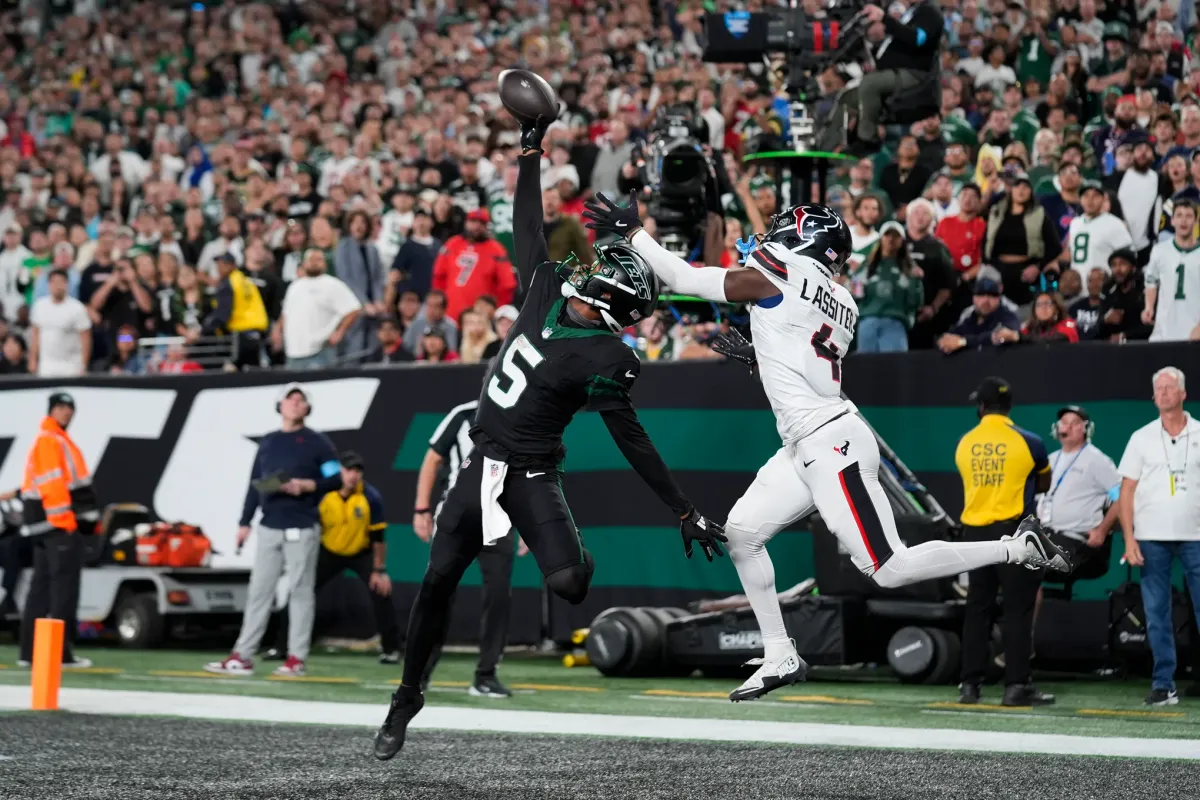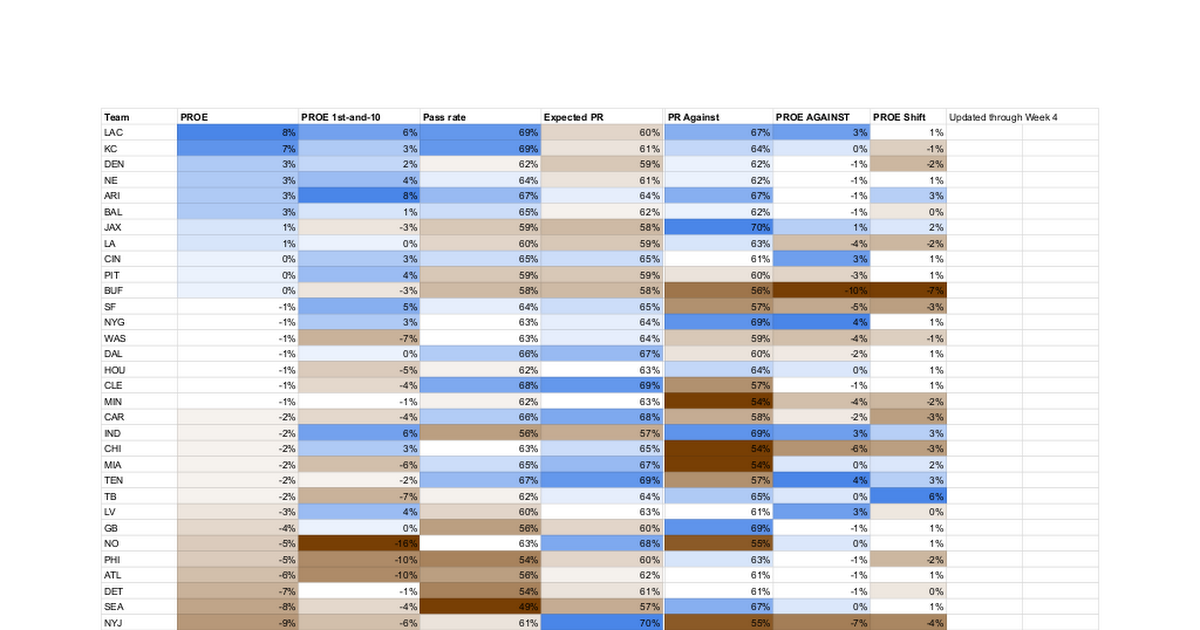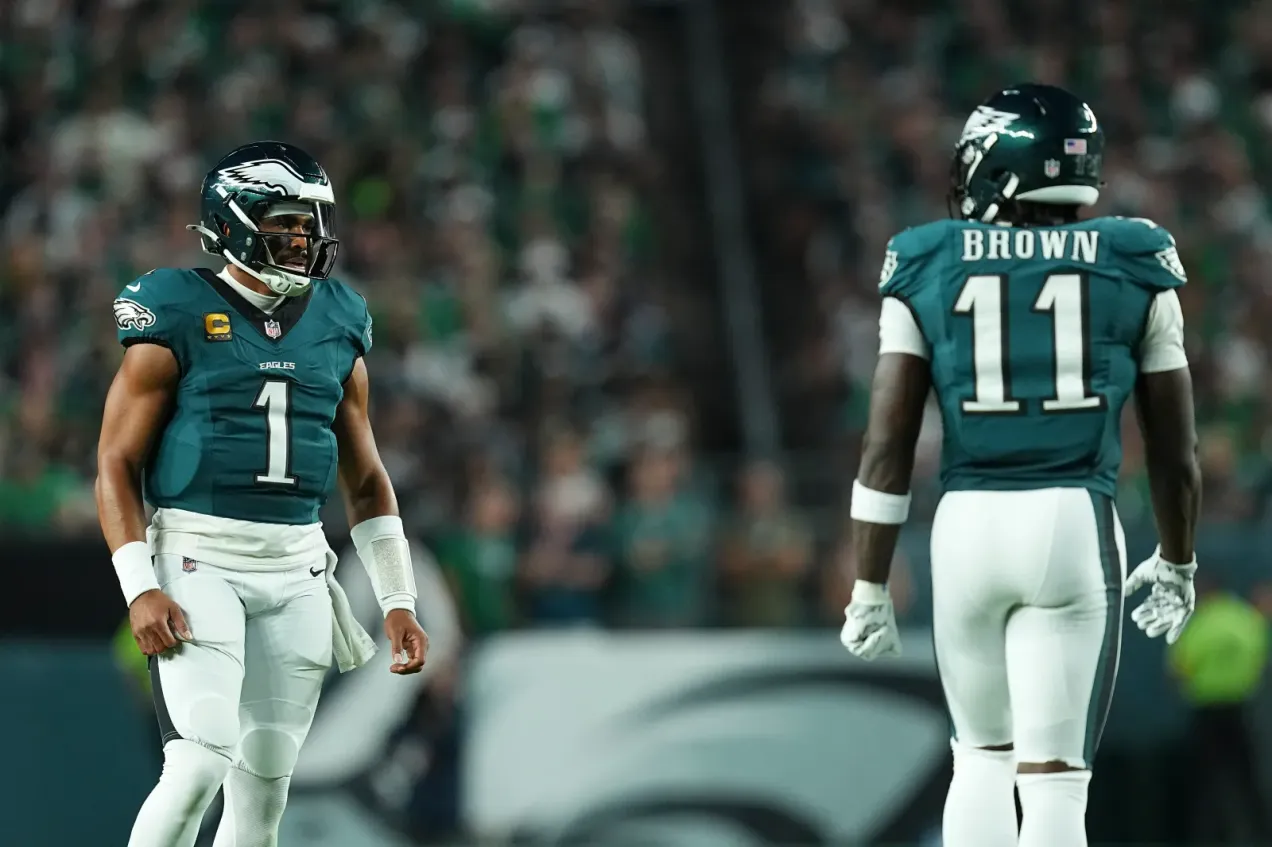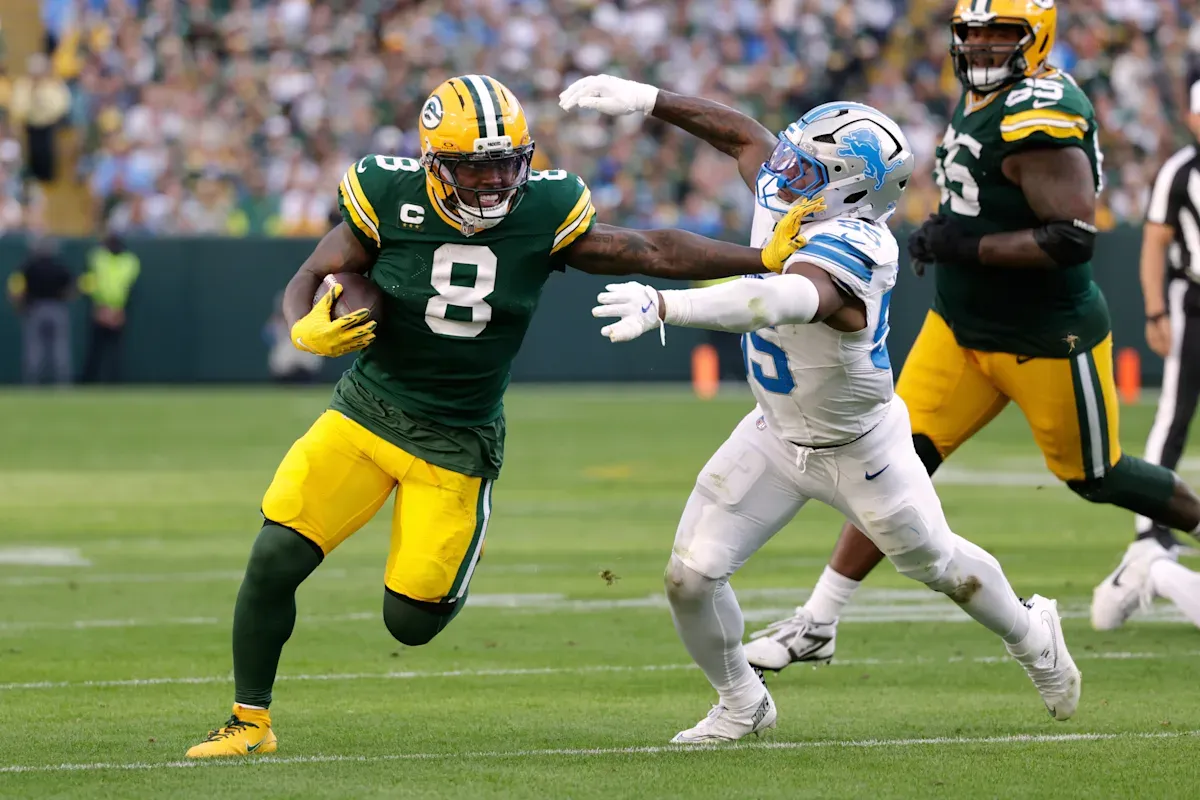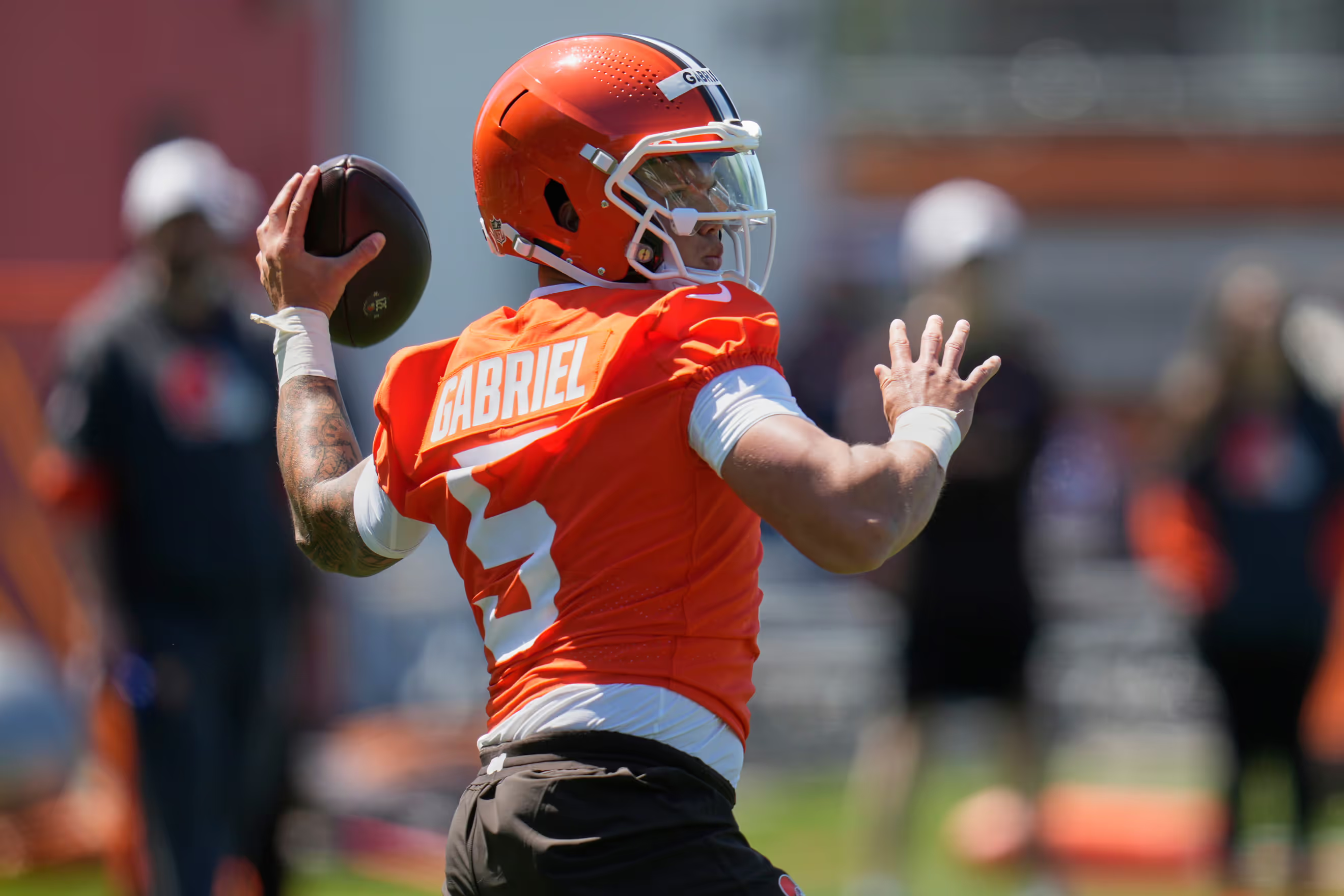
London Walkthrough Week 5: London Bridge Quarterback
Welcome to the Week 5 London Game Walkthrough.
In this article, I'll outline critical fantasy football context for a glorious morning of international football.
(The stats below are from PFF, NFLfastR, rbsdm.com, RotoViz, FantasyLabs, Fantasy Life, Fantasy Points, ESPN, FTN, and NFL Next Gen).
PROE data is available for subscribers at the bottom of the post.
Vikings at Browns, 9:30 AM
Vikings
Implied Team Total: 20
In two games this season, Carson Wentz has been much better than JJ McCarthy was in his two outings.

At the same time, Carson Wentz was much better against the Bengals than he was against the Steelers. It's easy to look good against one of the worst defenses in the league, harder to look good against a solid Steelers defense.
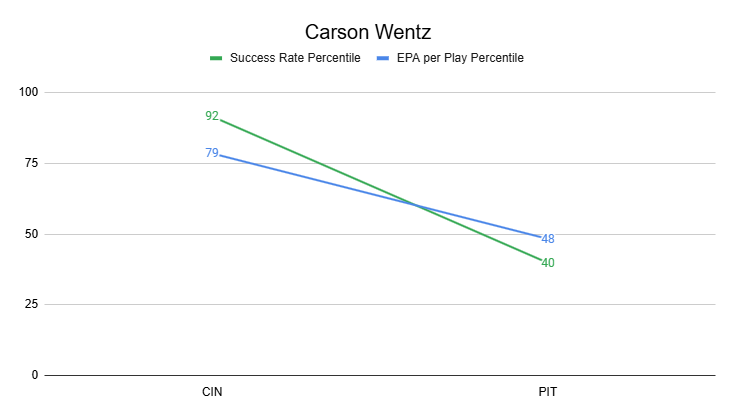
It's much harder still to look good against an elite Browns pass rush.
And that's before you consider that the Vikings will be down multiple offensive linemen this week. LG Donovan Jackson and RG Will Fries have already been ruled out. Starting center Ryan Kelly is likely to be out with a concussion, and backup center Michael Jurgens has had back-to-back DNPs with a hamstring injury.
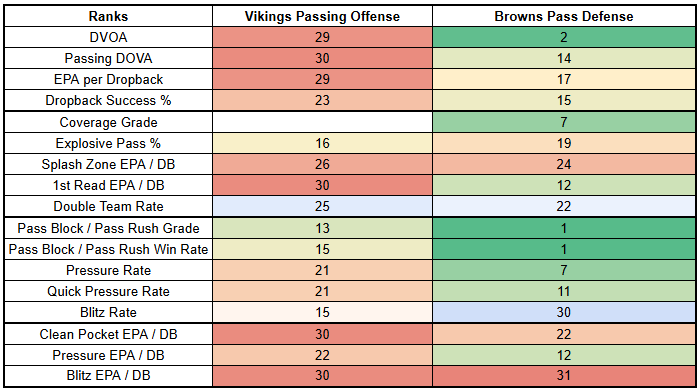
The natural pivot would typically be to lean on the run here. After all, the Browns will be starting a rookie QB and have just a 16.5-point implied team total. Kevin O'Connell can probably get away with playing first-to-20-points wins.
Unfortunately, if you're trying to put up even a modest point total on the Browns, the run game might not help much.

Fortunately, even with more of a lean to the run this year than in the past, O'Connell doesn't seem overly committed to the ground game. Against the Steelers, the Vikings were willing to embrace negative game script. If the run game isn't working, O'Connell isn't the type of coach to bang his head against the wall.
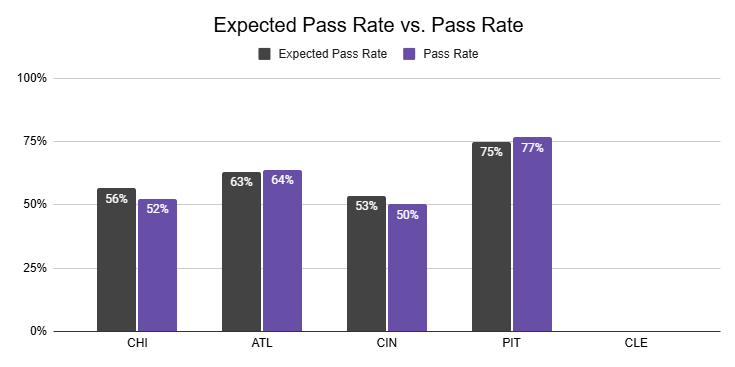
The issue for O'Connell here is that the run game might be struggling, and the Vikings could be breaking down in pass protection. What can he lean on that will actually work?
The key to this matchup might be Carson Wentz getting the ball out very quickly.
On quick throws (2.5 seconds or quicker), the Browns rank fifth-worst in EPA per play behind only the Cowboys, Dolphins, Commanders, and Patriots. The Browns' secondary is actually pretty vulnerable if you can mitigate their pass rush.
Carson Wentz does look capable of doing this; his 2.62-second time-to-throw is the third-quickest this year, behind only Aaron Rodgers (2.52) and Patrick Mahomes (2.53).

Unsurprisingly, when the Vikings need to get the ball out quickly, Justin Jefferson is their go-to receiver. Jefferson has a 32% TPRR on quick throws and 2.85 YPRR. It's a tough matchup, but he remains a locked-in WR1.

TJ Hockenson also looks like a key part of the Vikings' quick pass strategy. He has a 23% TPRR on quick throws.

And, even with Jordan Addison back in the lineup last week, Hockenson is coming off a season-high 91% route participation. The matchup makes him a low-floor option, but there's potential for him to combine strong route participation with an increased target priority. He's a high-end TE2.

When Addison returned to the lineup last week, the Vikings were not looking to ease him back into action. He immediately had a full-time role in the offense.

Jalen Nailor returned to a part-time role.

And for Adam Thielen, the clock struck midnight.

Addison immediately stepped into a solid first-read target role and produced very efficiently. Given his downfield skillset, this might not be an ideal matchup for him. But then again, that's hard to say for sure. Jefferson has dominated quick targets this year, but largely with Addison out of the lineup. Perhaps Addison will be more involved there this week. The main takeaway here is that Addison is back to his normal role and looks good. He's a WR3.

This is a funny matchup because ultimately, I expect the Vikings to have the most success by attacking through the quick passing game. And I expect their rushing efficiency to be pretty weak. So we should be able to count on passing volume then? Well... maybe not.
The Browns' offense has been so bad that, even with an elite run defense, teams are running on them at a high rate. So, while I think the Vikings' passing game probably drives their scoring here, I'd still be picking my spots with Minnesota players.

It's also a matchup where Jordan Mason could end up seeing a lot of carries even if he's not running very efficiently.
Mason dominated carries against the Steelers, despite only seeing a 62% snap share.

His backup, Zavier Scott, looks more like a receiving complement.

On one hand, it's not ideal for Mason to still be boxed out of routes, even with Aaron Jones out of the lineup. On the other hand, Mason has always been a bet on rushing efficiency, and his running ability eventually leading to a high-volume rushing role. With Jones' injury, that role has arrived earlier than anticipated, and Mason is capitalizing on it. Mason is an RB2.

Browns
Implied Team Total: 16.5
Last week, I wrote:
Flacco currently has the worst EPA per game in the league. He's probably playing at an unsustainably poor level. But the Browns have no obligation to find out if there's a light at the end of this tunnel. Even coming off an upset victory against the Packers, Flacco needs to turn things around quickly, or we'll see a new starter in Cleveland soon.
Then Flacco did this:
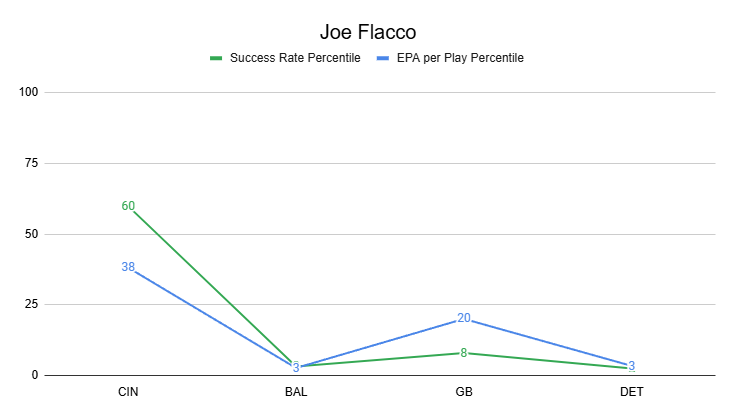
Flacco now has the worst EPA and success rate in the league. And there's a new starter in... London.
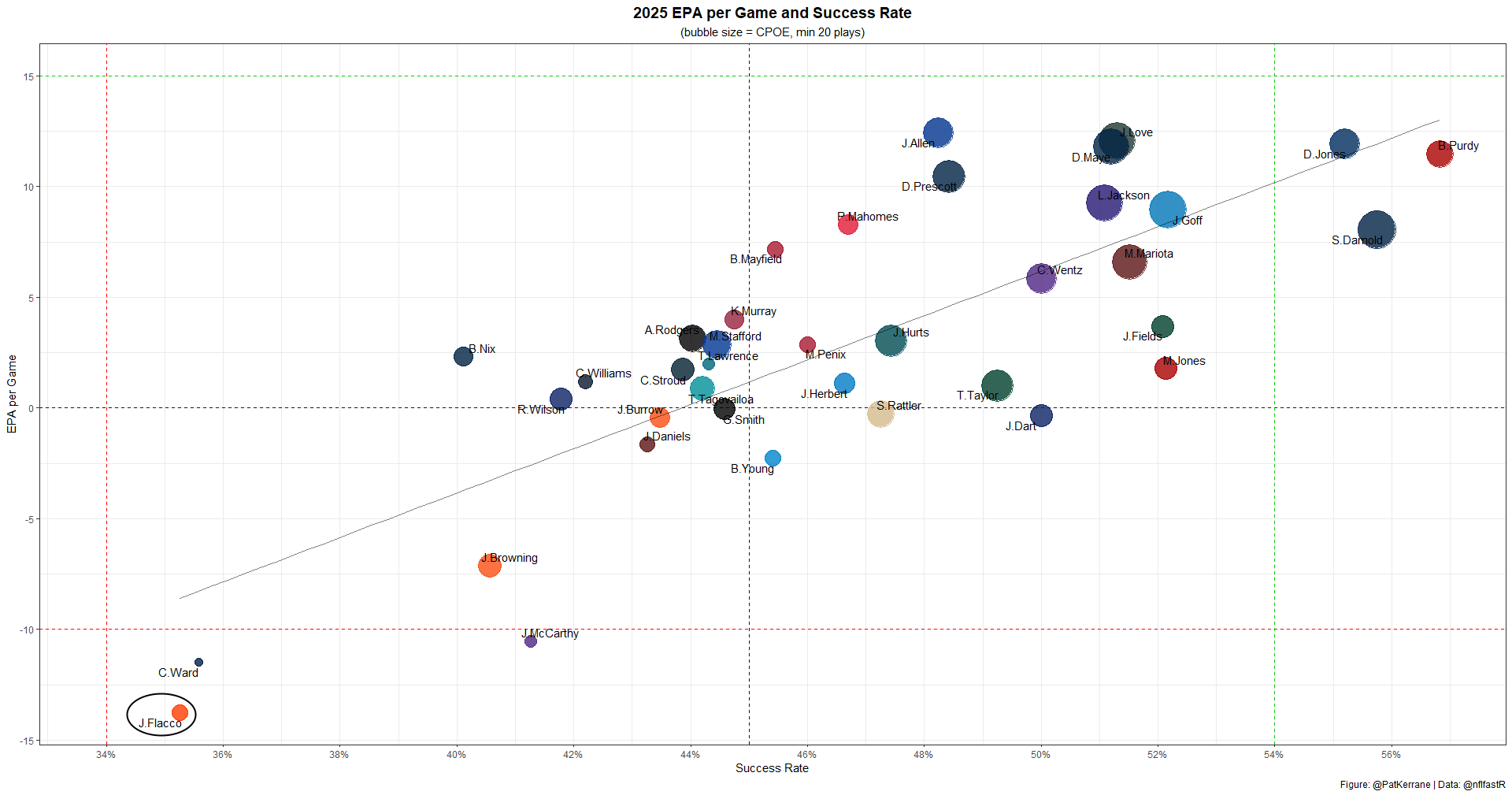
Dillon Gabriel will take over this week for the Browns.
This spring, I started writing up some QBs for deeper Superflex dynasty leagues, before realizing that I was way too far behind on the prospects people actually cared about to be doing that.
But I've actually done a deep dive on Gabriel's prospect profile, and will share some of that now.
Here were his positive indicators:
- Excellent in EPA per game.
- Putting aside his traits and chances of translating to the NFL, he was a legitimately good real-life college QB for three different schools.
- 2023 season was the highest EPA per game mark in the 2025 QB class.
- 2020 season was second-best.
- Career EPA per game leads the 2025 QB class.
- Putting aside his traits and chances of translating to the NFL, he was a legitimately good real-life college QB for three different schools.
- Not mistake-prone.
- Low turnover-worthy throw rate.
- Sacks are not a red flag.
- Good college deep ball.
- Very willing deep ball thrower, especially under pressure.
- Strong big-time deep throw numbers.
- Capable of adding at least some scrambling value.
Here were Gabriel's red flags:
- 25 years old.
- Likely to be what you see is what you get.
- Short and slight.
- Arm strength concerns.
- Can add a little value with his legs, but he is definitely not a dual threat.
- He also might not be a super willing scrambler.
- Draft capital.
- As the 94th overall pick, the NFL was pretty clear that they don't view Gabriel as a starting-caliber QB.
With the London Walkthrough apparently being an article where I quote myself, here was my final pre-NLF-draft summary on Gabriel.
I don't want to overstate my interest in Gabriel. Even as the No. 1 overall pick in the NFL draft, he'd profile as a Mid-1st round superflex pick. At that point, his size issues would become a major red flag relative to the NFL's evaluation.
I should also note that with the same draft capital as Jaxson Dart and Jalen Milroe, my model prefers Dart and Milroe (in that order).
But outside of the top four QBs, Gabriel is the QB who I can most clearly see emerging as a multi-year starter. The type of QB that team would actually be kind of excited to have under center. That's unlikely because his game probably won't translate to the NFL. But it's worth considering what happens if Gabriel's game survives the jump in competition because it's a good game.
Finally, I'll note that post-draft, Gabriel grades out as a 4th round Superflex rookie pick in my model—a priority dart throw. Last year, Spencer Rattler was in this same tier. This year... as the 144th overall pick, so is Shedeur Sanders.
Ultimately, Gabriel probably won't work out. But I'm more optimistic than most. I view him as a low-ceiling type of player. If you have an old, undersized pocket passer with arm strength issues, he's not going to power you to a Super Bowl or to a fantasy championship.
But what if your bar is lower? Like a lot lower. What if you mostly just want a duck-footed rookie tight end to see a bunch of catchable targets? Or what if you only care about a talented rookie RB being in a non-disastrous offensive environment?
In that case, I'd argue that people aren't excited enough about Gabriel.
Gabriel looks capable of doing what we need at an acceptable level, even if he's ultimately more of a Gardner Minshew-style starter-by-necessity than a real answer at the position.
But, please give me a few weeks for this take to play out—because this week, Gabriel is facing an elite Vikings defense.
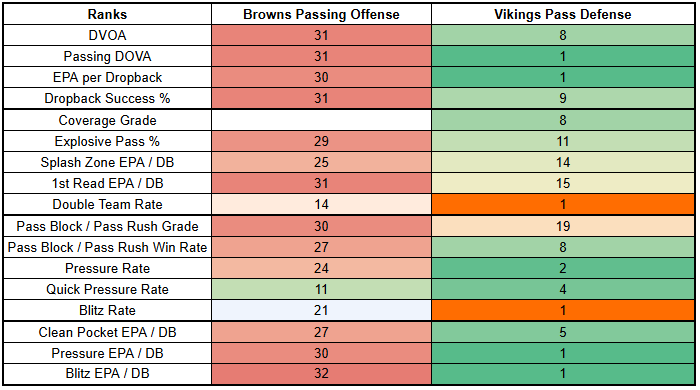
The Browns could be without multiple offensive linemen this week. LT Dawand Jones is out for the year. RT Jack Conklin has yet to log a full practice as he recovers from an elbow injury. The Browns are a weak pass-blocking unit to begin with.
So, rather than subject the rookie to a variety of Brian Flores blitzes, the Browns are likely to run the ball as much as game script will allow. The Vikings' run defense is far less imposing.

In fact, the Vikings are shaping up as a potential run funnel.

And, although the Browns were very willing to pass in the first two weeks of the year, they've shifted to a run-first approach since. Because they're frequently in negative game script, they're still passing a lot. But the Browns are down to a -4% PROE.
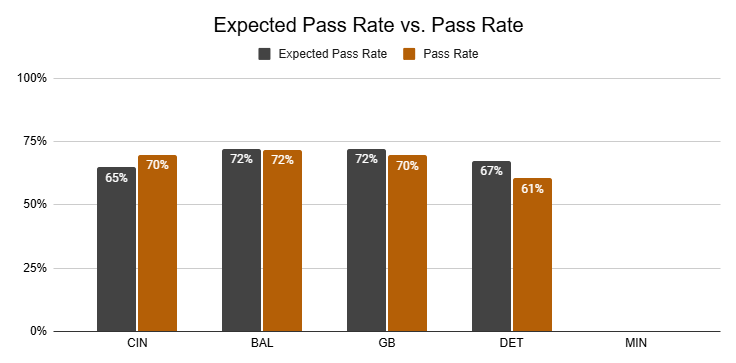
The Browns have also started prioritizing the run on 1st down.
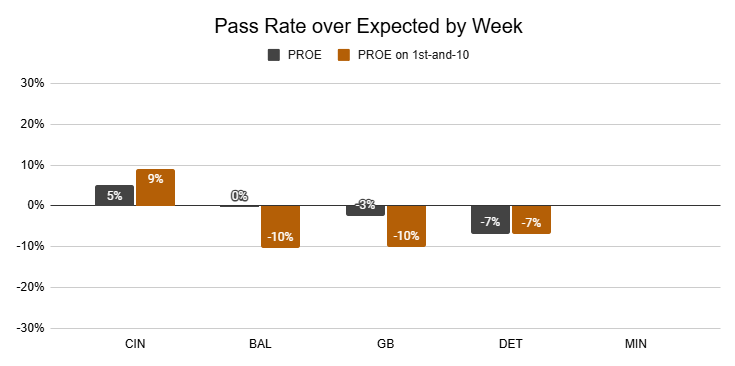
Another way to say this is that the Browns are prioritizing Quinshon Judkins, who has taken full control of the Browns' rushing workload.

Jerome Ford is technically the No. 2 RB here, but Dylan Sampson is still mixing in, making both unplayable.

Ford and Sampson are also limiting Judkins' receiving role. But his rushing profile is very impressive considering his surroundings. He'll likely be the focal point of the Browns' offense this week and is an RB2.

When Gabriel drops back, he's most likely to be looking for Jerry Jeudy, who leads the team with a 20% target share.
Jeudy's connection with Flacco was a major issue, as evidenced by his weak TPRR and very poor YPT. But he has some other red flags. Despite a low double-coverage rate, he has a very weak open score. Jeudy has also been playing almost exclusively outside and in a deep aDOT role. He's a high-variance deep threat in an offense where yards and TDs aren't really the play... we want someone who can rack up receptions.

With Gabriel under center, it's possible that Jeudy's role changes. But that could take a few weeks. And this week, Jeudy is in a tough matchup. He's a WR4.
With Cedric Tillman (hamstring) out, we're likely to see Isaiah Bond in more or less a full-time role this week. Bond has actually been drawing targets at a decent rate this year. Until last week, he just wasn't seeing enough routes.

In a full-time role, he's still very much a dart throw. But he looks somewhat viable.

Hey, remember when David Njoku ran more routes than Harold Fannin?

That might not be happening anymore.

Fannin has been markedly better than Njoku this year, earning targets at a much higher rate, to the point that he has a 4% edge in target share despite trailing by 15% in route participation.

Gabriel is the clearest sign that the Browns' youth movement has begun, but an increased role for Fannin is likely to be a part of the plan as well in the coming weeks.
I know, I know, I'm biased. But is Jeremy Fowler?
-Gabriel's mobility and decision-making will help
— Jeremy Fowler (@JFowlerESPN) October 1, 2025
-Browns high on rookies Quinshon Judkins, Harold Fannin and Isaiah Bond, who can coalesce with rookie QB. https://t.co/XL5nlYtsS5
Given the matchup, Fannin is still just a high-end TE2. But we'll be waddling to the bank very soon.
